Does the idea of biting into a ripe, juicy watermelon that’s been growing on a tree sound like a delicious summer fantasy? For most fruit lovers, the concept of watermelons sprouting from trees seems almost too good to be true. But contrary to popular belief, the answer to the question ‘Do Watermelons Grow on Trees’ is actually yes! In this blog post, we’ll be exploring everything you need to know about watermelon trees and how they can offer an exciting addition to your garden.
What Kind of Plant is Watermelon?
Watermelons are members of the Cucurbitaceae family. This includes plants like cantaloupe, squash, and cucumbers. While watermelon is a vine-like (scrambler) plant, it is not considered a tree but rather an herbaceous perennial. It has thick, coarse stems that can grow up to 20 feet in length. The leaves of the watermelon plant are large and ovate with a serrated margin and hairy surfaces.
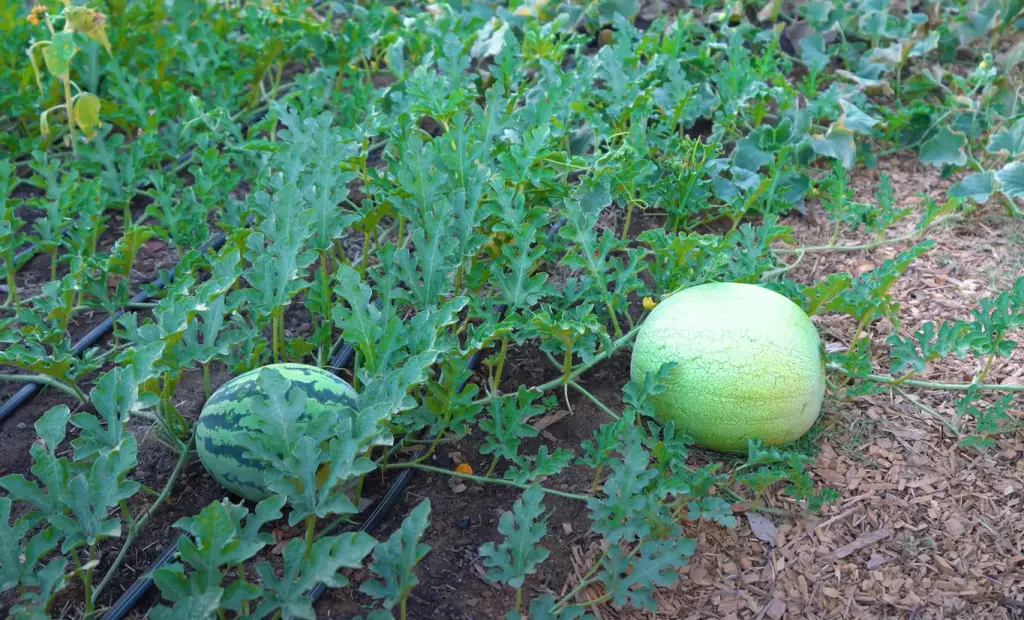
The flowers of watermelon have both male and female organs on separate plants that require pollination for successful fruiting, making them monoecious.
How do Watermelons Grow?
Watermelons actually grow on vines that can reach up to 20 feet in length!
The growth cycle of a watermelon vine begins with flowers that become pollinated and turn into fruit. The entire process takes between 70 and 90 days, depending on the variety of watermelon being grown and the climate conditions during that time. Watermelons need lots of sunshine, as well as deep watering two to three times a week with 1-2 inches of water for best results.
When it’s time for harvesting your watermelon ripeness can be detected by gently thumping the melon and listening for a hollow sound. A ripe watermelon should also have a smooth, deep yellow spot on the bottom side.
Watermelons are highly nutritious and contain many essential vitamins and minerals like Vitamin C, B6, magnesium, potassium, and lycopene. Enjoying a slice of cold watermelon is an amazing way to beat the heat while getting some important nutrients in your diet!
So now that you know do watermelons grow on trees – the answer is no! You can grow delicious watermelons in your own backyard if you have the right conditions. With proper care and attention, you can enjoy juicy slices of watermelon all summer long!
Do Watermelons Grow On Trees?
No, watermelons do not grow on trees. Although the fruit is sometimes referred to as a “watermelon tree,” this is merely a nickname for large vine-grown melon. Watermelons are actually part of the same family as cucumbers, squash and pumpkins, all of which are grown on vines.
Watermelons are typically planted in May or June and require about 90 days to reach maturity.
The soil should also be well-draining and nutrient-rich, so consider adding compost or manure prior to planting if necessary.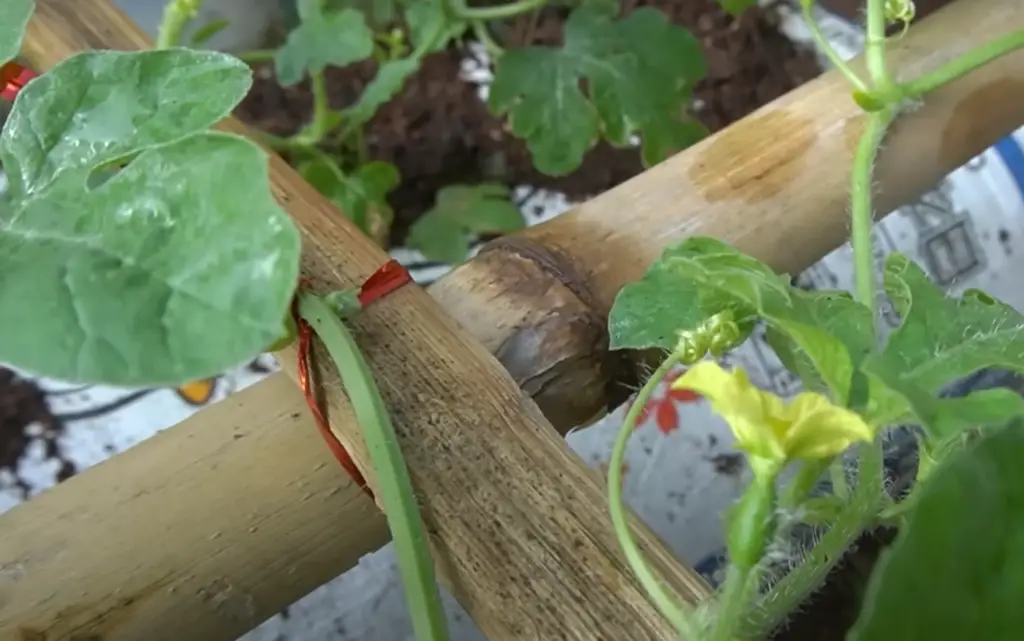
Once planted, it’s important to water the soil around the melon regularly. Too much or too little water can lead to problems like blossom end rot, so try to keep it consistent. Additionally, consider adding mulch around the plants to help retain moisture and prevent weeds from developing.
Harvesting a watermelon is largely dependent on its size and maturity level. Generally speaking, they are ready for harvest when the tendrils have turned brown and crispy and when their underside is creamy yellow in color. To test for ripeness, thump the melon with your finger – if it sounds hollow then it’s likely ripe!
So there you have it – although people might call them “watermelon trees,” this isn’t actually accurate.
Why Cannot Watermelons Grow on Trees?
No matter how much you enjoy the juicy treat, watermelons cannot grow on trees. One major reason is that it needs a long growing season and plenty of sunshine to mature. The climate in most parts of the world isn’t suitable for this type of fruit tree to survive and thrive.
Another reason is that watermelons are very heavy and large. This makes them difficult to support on branches, as they wouldn’t be able to hold their own weight when fully ripe. Additionally, the pollination process contributes to why watermelons don’t grow on trees; bees prefer smaller fruits like apples, pears etc. As a result, watermelon flowers need hand-pollination in order to produce fruit.
Finally, watermelons need a lot of space to grow and develop fully. Trees simply don’t provide enough room for the vines to spread. This is why farmers often plant watermelon in open fields or large indoor pots.
Despite not being able to grow on trees, watermelons are still one of the most popular summer fruits around the world! There are many ways to enjoy them including eating them fresh, turning them into juice or salads and even baking pies with them. So go ahead and grab a refreshing slice for yourself – we guarantee you won’t be disappointed!
Where does Watermelon Grow?
Watermelons are actually a type of vine that grows along the ground. In fact, they prefer to grow in areas with ample sunlight and well-drained soil. Watermelon plants may spread out more than 6 feet across! As such, it’s best to give each plant plenty of room to grow.
The main stem can reach up to 6 feet in length if given enough support (such as trellising). Tendrils then sprout from the stem and attach themselves to nearby objects for additional support. These tendrils help keep the watermelon vines upright so that they don’t sprawl all over the place. At the end of each tendril is usually a small flower which will turn into a watermelon if it’s pollinated.
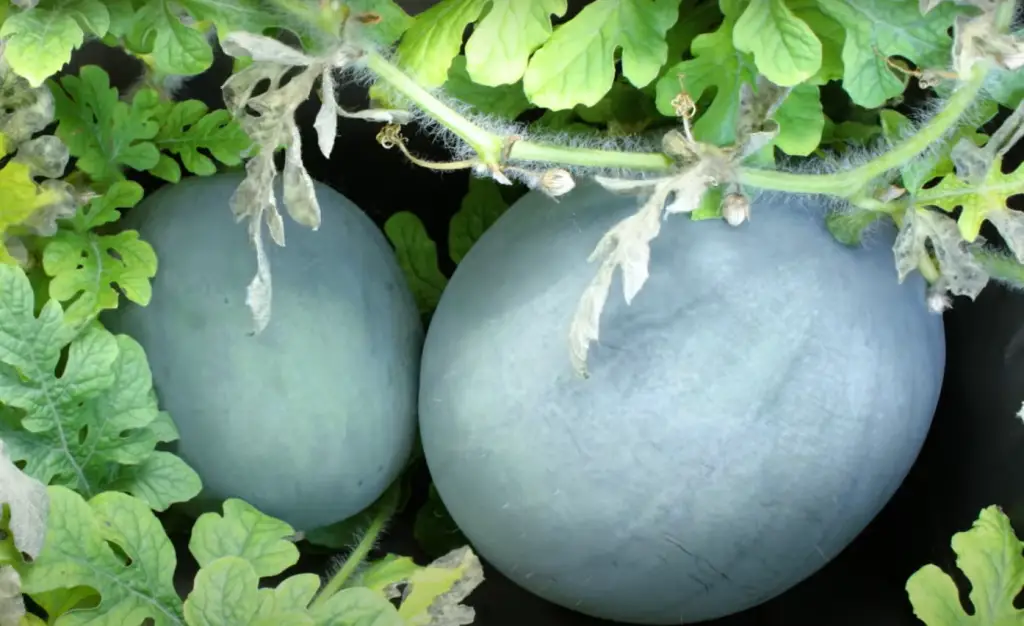
So, while watermelons don’t technically grow on trees, they do need some support from other objects to keep them upright and make sure that all of the fruit has enough room to develop properly. The final answer is no, watermelons don’t grow on trees! They may be supported by trellising or nearby structures as long as there is ample sunlight and well-draining soil. Providing your watermelon plants with the best environment possible will help you get a delicious crop in no time!
Where does Watermelon grow in the United States?
Watermelons are an iconic summer staple, but many people don’t realize that they are actually grown in a variety of places across the United States. While watermelons can be found growing in backyards and farms all around the country, there are certain regions that produce more of them than others.
In the Midwest and central states such as Indiana, Missouri, Illinois, Nebraska and Kansas you will find some of the most productive watermelon-growing areas in the nation. In Florida and Texas you’ll also find plenty of fields full of watermelons along with other big producers like Georgia, California and Arizona. When it comes to harvesting season for these juicy fruits – usually between July and October – you’ll be able to find them in grocery stores and markets across the nation.
The most popular variety of watermelon in America is a seeded one – with its bright red, juicy interior packed full of black seeds. But there are plenty of tasty seedless varieties available too if you’re looking for something a little different. You can also choose from mini watermelons, yellow-fleshed watermelons and even square watermelons that are designed to fit perfectly into refrigerator shelves! No matter what type you opt for, they all require plenty of sunshine, moisture and well-draining soil conditions to grow successfully.
So whether you live in one of the prime growing regions or not – it’s easy to enjoy the refreshing flavor of these succulent fruits year round with a little bit of ingenuity and careful planning.
Where does Watermelon grow in India?
In India, watermelons can be found in many areas throughout the country. They are primarily grown in warmer parts of the country such as Himachal Pradesh, Punjab, Gujarat, Rajasthan and Uttar Pradesh. Watermelons also grow well in Haryana and Andhra Pradesh. The best harvesting season for watermelons is during the monsoon season when sufficient water supply is available to farmers.

The most popular varieties of watermelon grown in India are Sugar Baby, Crimson Sweet, Charleston Gray and Black Diamond. These are all large-sized fruits with bright yellow or green skin and sweet reddish-pink flesh inside.
Where does Watermelon grow in the United Kingdom?
Watermelons are native to the Mediterranean region and are grown in many countries around the world. In the United Kingdom, watermelons can be found growing in some areas of England and Wales, but not Scotland or Northern Ireland. Usually, you’ll find them grown commercially in greenhouses where it’s warm enough for them to thrive. They can also be found on farms or at farmer’s markets during summer months. Watermelon plants need plenty of sun and require a long growing season, so they aren’t suited for northern climates with cold winters. However, if you live somewhere with a mild climate, you may have success growing watermelons outdoors! Just make sure to give them plenty of fertilizer and water throughout the season. With a bit of patience, you’ll be enjoying sweet, juicy watermelons in no time!
Watermelons should be harvested when the rind is firm and bright in color. If you’re not sure if it’s ripe yet, you can knock on the outside; a ripe watermelon will have a deep hollow sound. Cut it off the vine with pruning shears or scissors and enjoy your homegrown melon!
Where does Watermelon grow in Australia?
Watermelons can be found growing in most parts of Australia. The temperate climate and plentiful water sources in this country make it an ideal environment for the growth of succulent fruit. The northern regions tend to have higher temperatures, which are perfect for ripening watermelon fruits. In some areas, such as Western Australia, watermelons may be grown in greenhouses or other protected environments if necessary.
To get the best results it is important to choose a variety suited to your local conditions and follow best practice guidelines when planting and harvesting.When selecting a variety of watermelons, consider the size of your space, as some varieties can be quite large and will take up more room. Also consider how long the watermelon will need to mature before harvesting: some varieties may only take a few months, while others might require 6 months or more.
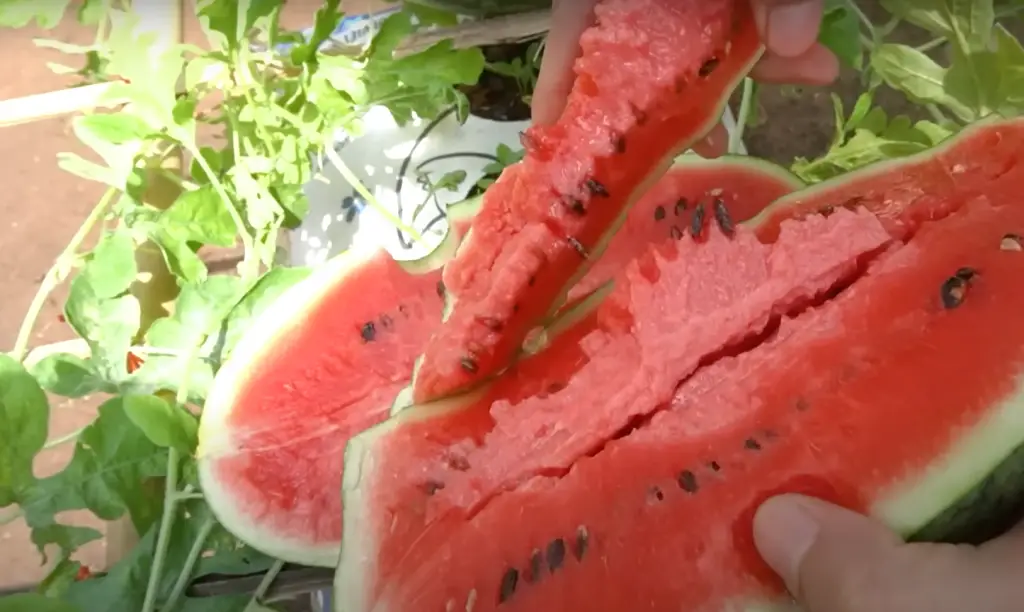
When planting watermelons, it is important to ensure they have plenty of sunlight and nutrient-rich soil. Water should be applied frequently but not too much; overwatering can cause the fruit to split open prematurely. Once established, watermelons should be fertilized every few weeks with a balanced fertilizer for best results. If possible, provide stakes or cages to support the vines and protect them from winds that can damage the delicate fruits. Mulching around plants also helps keep moisture in the soil and reduce weeds.
Harvesting watermelons can be tricky, as it is hard to know when they are ripe. Different varieties have different skin colours that indicate ripeness – some will turn a solid yellow-green while others might become mottled with darker patches on top of their regular shade of green. A surefire way to test ripeness is to thump the melon and listen for a hollow sound – this means it’s ready to eat! Watermelons can be stored at room temperature for up to one week, or refrigerated for several weeks. [1]
Watermelon is an incredibly versatile fruit that can be enjoyed fresh or cooked into dishes and desserts. Whether you are growing watermelon in your backyard or picking some up from a local farmer’s market, it is sure to be a delicious addition to any meal. With the right conditions and care, it can even make for a great crop in Australia!
What does a Watermelon plant look like?
A Watermelon plant has large, green leaves with toothed edges and a long, thick vine. The fruit is round or oval in shape and typically measures about 8–12 inches (20–30 cm) in diameter. Inside the rind of a Watermelon is a juicy pink or red flesh that contains several edible seeds.
Watermelons are grown from seeds planted directly into the ground during the springtime when soil temperatures have warmed up. The vines need plenty of space to spread out and mature — typically about three feet apart for each mound.
If you’re growing Watermelons in your garden, be sure to keep an eye out for pests such as squash bugs and cucumber beetles that can damage the plants. Also, make sure you water them consistently during dry periods to ensure the fruits remain juicy and sweet.
Overall, Watermelon plants are visually attractive with their large leaves and vibrant fruit. Growing them is a rewarding experience that can be enjoyed by gardeners of all levels!
How To Grow Watermelons?
Growing watermelons is not as difficult as it seems, but there are some things to consider before planting. Here are a few tips for getting the best results:
- Select a warm sunny spot in your garden with good drainage. Watermelons need plenty of sunlight and heat to grow successfully.
- Prepare the soil by adding organic matter like compost or aged manure. This will help retain moisture and add nutrients to the soil.
- Plant seeds or seedlings about four weeks after the last frost when temperatures have warmed up. Planting them too early could lead to poor germination rates or even death of the plants due to cold snaps.
- Space watermelon plants at least 3 feet apart. This will allow them to spread out and get plenty of sun and air circulation.
- Water the plants deeply and consistently throughout the growing season, making sure not to over water or let them dry out too much.
- Plant a trellis or stake nearby so the plant can climb up as it grows bigger. This helps keep fruits off the ground and prevents rot from occurring.
- Watch for pests like squash bugs, aphids, cucumber beetles, mites, whiteflies, and nematodes. If you see any of these insect pests, use an appropriate pesticide to get rid of them quickly.
- Fertilize when the plants start flowering by adding a balanced fertilizer to the soil. This will help the plants produce quality fruits.
- Harvest watermelons when they are ripe, usually about 75 to 80 days after planting. The rind should be firm and have a dull thud sound when tapped lightly with your knuckles. [2]
With these tips in mind, you’ll be able to successfully grow your own watermelons! Enjoy your sweet summer treat!
Other Fruits That Don’t Grow On Trees
Not all fruits grow on trees. There are a number of other common fruits that don’t require tree care and maintenance to thrive. These include strawberries, blackberries, raspberries, blueberries, cranberries, currants, melons (including watermelon), grapefruit, kiwifruit, avocados and passion fruit.
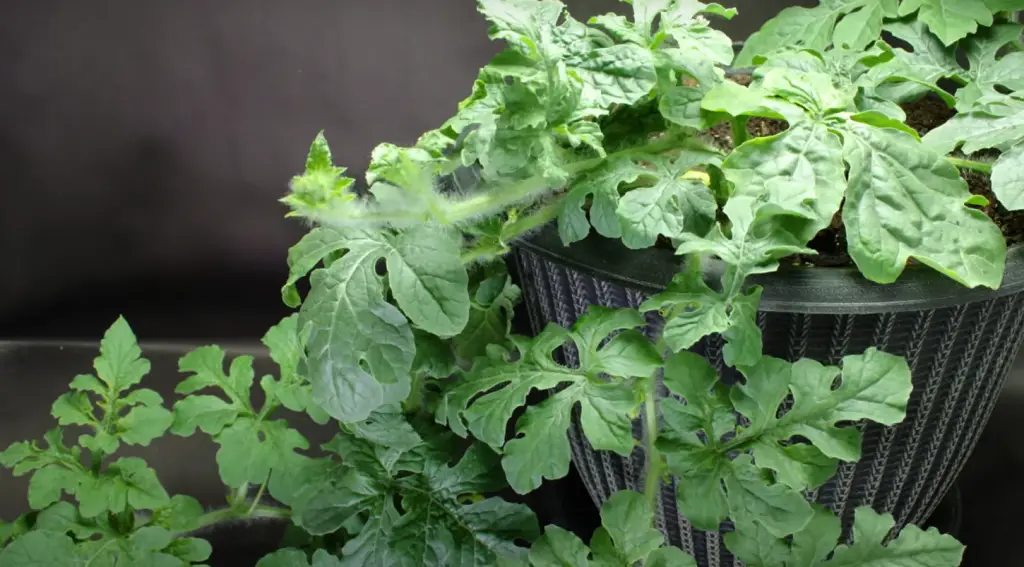
When it comes to growing these types of fruits at home or on your property, you need to be mindful of the specific requirements for each type of plant. Depending on the variety you choose and where you live in the world will also have an effect on what type of soil, sunlight and moisture the plants need in order to successfully produce fruit – so make sure you do some research before planting!
FAQ
Is a watermelon a tree or a plant?
Watermelon is actually both a plant and a fruit. It is classified botanically as a berry, which makes it a type of flowering vine that grows on a trellis or other support structure. The part of the watermelon that we eat is the edible fleshy portion inside the protective rind or skin, which contains seeds. The vines can be trained up trees if you provide adequate support, however it is not necessary for them to grow successfully. [3]
Where do watermelons grow?
Typically, watermelons grow on the ground. The vines of a watermelon plant will sprawl along the ground and take up a lot of space. You’ll often find them in large patches or fields where there is plenty of room for them to spread out.
But it is possible for watermelons to grow on trees too! This can be done by training the vines to climb a trellis or fence so that they stay off the ground. If you don’t have access to either of these things, you can even use an old ladder as the support structure for your watermelon vines.
If you’re growing watermelons on a tree, make sure that it gets enough sunlight and that the soil is well-drained. It’s also important to water the vines regularly and provide them with fertilizer. Once they start growing, you may need to tie them up to the tree for extra support so that they don’t sag under the weight of the fruit. [4]
Growing watermelons on trees can be a fun experiment, and it could even give you access to large fruits that would be difficult to grow in small containers or on the ground! Just make sure to take good care of your plants and monitor them regularly, as any problems could affect your harvest.
How do I know when my watermelon is ripe?
When you’re growing watermelons, knowing when the fruit is ripe and ready for harvest can be tricky. Generally, the best way to tell if a watermelon is ripe is to look for three main signs:
- The tendril nearest to the melon should have turned brown and dried up.
- The bottom of the melon should have changed from green to white or yellow in color.
- You should hear a dull thud sound if you tap on it with your knuckle. This indicates that it’s firm enough and ready for harvesting!
Harvesting too early may result in an immature watermelon, while waiting too long can lead to a melon that is overripe and mushy. Keep an eye out for these signs throughout the season, and you’ll be sure to have plenty of sweet, juicy watermelons!
Do melons grow on a tree?
No, melons do not grow on trees. Despite the common misconception, watermelons are actually fruits that grow from vines, like pumpkins and squash. The vines spread out across the ground and rely on pollination from bees to produce its signature fruit: the watermelon.
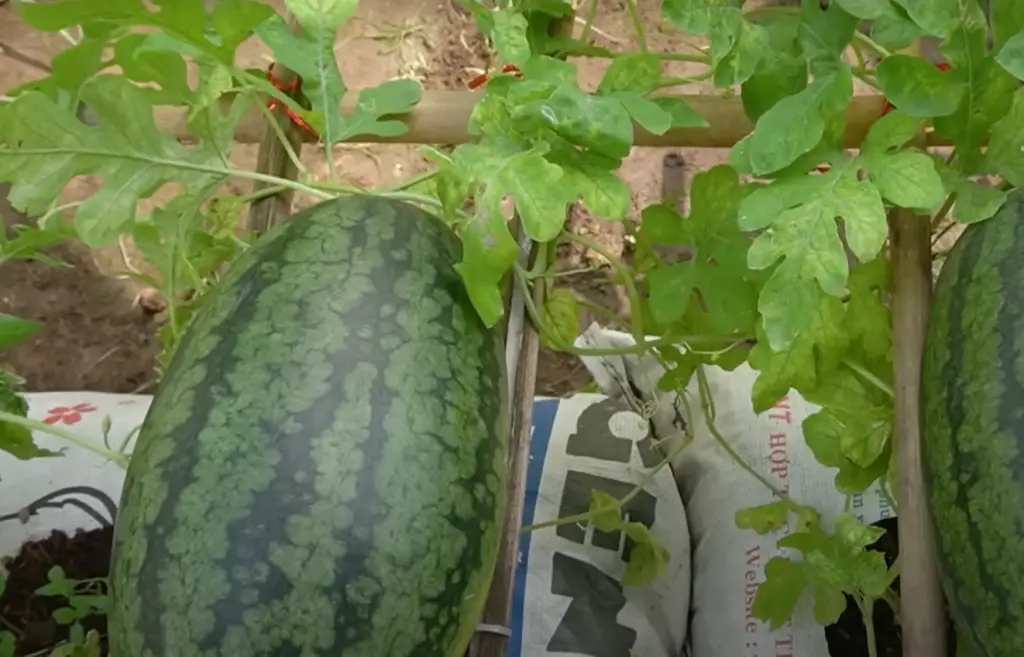
Unlike other fruits such as apples or oranges, watermelons cannot be harvested directly from a tree; you will find them along the vine’s path in the dirt! Harvesting a ripe watermelon is all about timing – if it’s too early, it won’t be sweet enough yet; if it’s too late, then it may have split or rotted away. [5]
If you’re looking for tips on how to select the perfect watermelon, try thumping it with your hand and listening for a “drum-like” sound. This is an indication that the melon has ripened and is ready to be enjoyed! You can also look out for yellow spots on the underside of the watermelon, another sign that it is ripe.
Though you won’t find watermelons growing on trees, don’t let that deter you from enjoying this summertime favorite! With a little bit of patience and knowledge about how to pick one, you’ll be sure to enjoy some delicious melon in no time.
What grows on a tree?
Most people know that apples, oranges, and other fruits grow on trees. But do watermelons also grow on trees? The answer is a bit complicated — it depends!
While some species of watermelon are grown on the ground, others can be found growing on vines that climb up tree trunks or trellises. So technically speaking, yes – you could say that watermelons do grow on trees!
You’ve probably seen pictures of small round green-and-white striped melons hanging from vine branches in farmer’s markets and gardens. These unique looking fruits are known as ‘bush watermelons’ and they are usually grown vertically on trellises made out of bamboo stakes or wooden poles.
Useful Video: Growing Watermelon Plant Time Lapse – Seed to Fruit (110 Days)
Conclusion
So, watermelons do not grow on trees. Watermelons are actually a type of vine that grows from the ground and can reach up to 6 feet in length! They need warm temperatures, lots of sunlight, and plenty of water to thrive. If you want to grow your own watermelon patch, make sure to provide these conditions in order for it to be successful! Good luck with your gardening journey!
References:
- https://farmingdawn.com/do-watermelons-grow-on-trees/
- https://plantscraze.com/do-watermelons-grow-on-trees/
- https://en.wikipedia.org/wiki/Watermelon
- https://kids.britannica.com/kids/article/watermelon/353916
- https://krostrade.com/blog/do-melons-grow-on-trees/





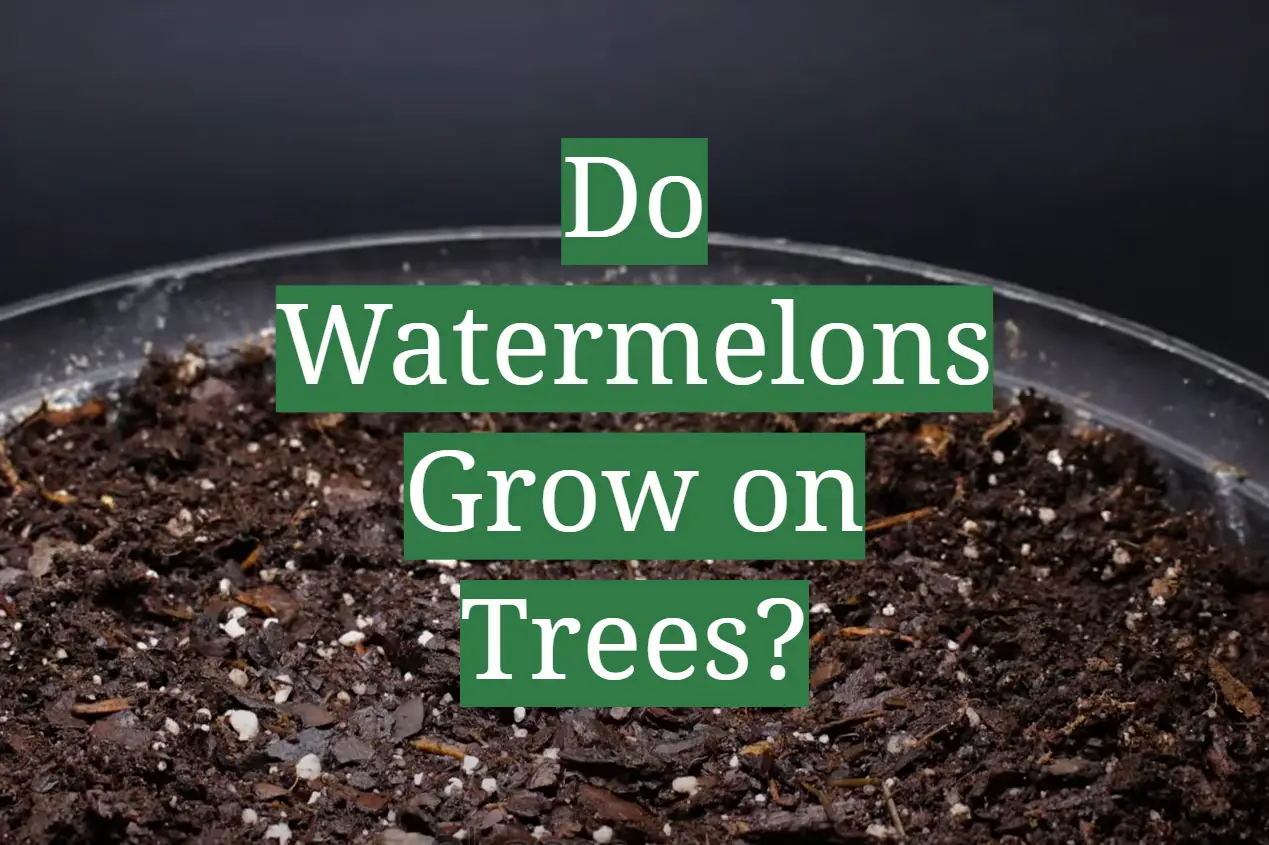




Leave a Reply
View Comments